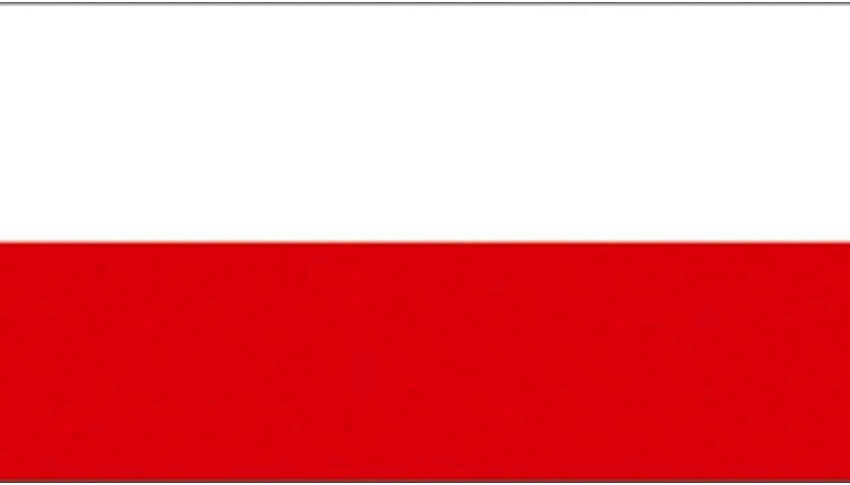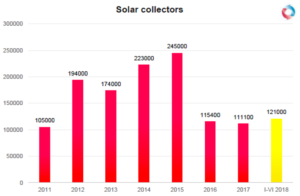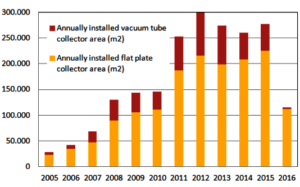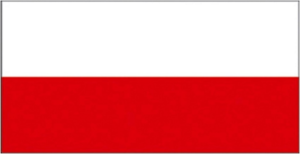Poland’s Support Scheme NFOŚiGW to Run Out of Money in 2014
October 7, 2013
The debate about the new regulations for the National Fund for Environmental Protection and Water Management (Polish initialism: NFOŚiGW) continues: From 1 October 2013 on, the grant cap will refer to a collector’s aperture area and not its gross area. After the Society of Vacuum Collector Importers and Distributors criticised the new guidelines on 30 September, it is now the Association of Manufacturers and Importers of Heating Appliances (Polish acronym: SPIUG) which is voicing scepticism over the new guidelines. Meanwhile, however, NFOŚiGW solar thermal grant programme is said to run out of money next year.
“The old grant rules favoured vacuum tube collectors; the new ones, in contrast, favour flat plate collectors,” SPIUG’s President, Janusz Starościk, points out. According to SPIUG, vacuum tubes and flat plates are “two different technologies and one cannot directly compare their aperture area”.
So, SPIUG proposes to once again change NFOŚiGW’s programme rules: “We think the most appropriate method would be to calculate grants based on energy output per aperture area from Solar Keymark data,” Starościk explains. SPIUG proposes to commission “an institution independent of suppliers”, whose task would be to create a list of collectors with their energy output for NFOŚiGW.
NFOŚiGW, on the other hand, is sceptical about SPIUG’s proposal: “According to data from the Institute for Renewable Energy, only 8 % of collectors offered in Poland can list thermal output data based on Solar Keymark certifications,” Paweł Bartoszewski, who heads the solar thermal programmes at NFOŚiGW, explains. “Introducing new requirements would also contradict current programme rules which allow all collectors compliant with the PN-EN ISO 12975 norm to be funded,” he adds.
Meanwhile, the PLN (Polish Zloty) 450 million programme (EUR 107 million) will soon run out of money. NFOŚiGW says on its website that there are only PLN 67 million (EUR 16 million) left to be distributed next year, compared to PLN 143 million this year – a drop of 53 % (see the table below). “It is likely that the solar thermal subsidy scheme will run out of money in the first half of 2014,” Witold Maziarz, Spokesperson for NFOŚiGW, admits. The situation gets even more difficult because the implementation date of the Polish Renewable Energy Sources Law is being continually postponed.
The statistics on the NFOŚiGW website list 44,588 projects already subsidised with a total amount of PLN 315 million by 27 September 2013, among them 36 housing communities with subsidies amounting to PLN 1.6 million. The average cost of a residential solar water heater was PLN 14,800 (around EUR 3,530), the average project size of multi-family houses was PLN 99,200 (around EUR 23,630).
|
Year |
Allocated Budget |
Budget spent by |
Budget share |
|
2010 |
6,696 |
6,696 |
100 % |
|
2011 |
79,563 |
79,563 |
100 % |
|
2012 |
141,587 |
141,587 |
100 % |
|
2013* |
143,321 |
87,182 |
61 % |
|
2014 |
66,998 |
0 |
0 |
|
2015 |
11,835 |
0 |
0 |
|
Total |
450,000 |
315,028 |
70 % |
Allocated funds versus budget spent on NFOŚiGW solar thermal subsidy scheme
*2013 figures as of 27 September 2013
More Information:
http://www.spiug.pl
http://www.nfosigw.gov.pl/
This news was written by Marcin Czekanski, a Polish journalist specialised in renewable energies and based in Szczecin, Poland.


